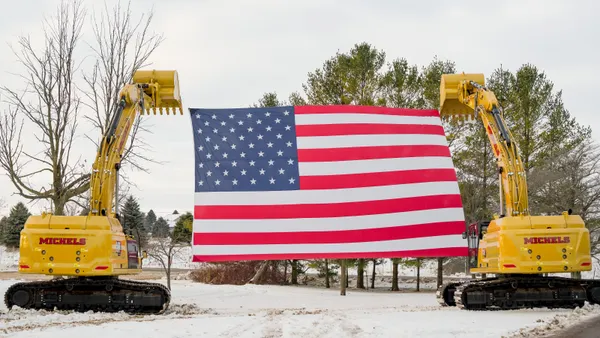Felice Farber describes herself as “a public policy wonk.”
A former lawyer and government affairs officer for the General Contractors Association of New York, she said her passion lies at the intersection of construction and public policy.
Farber was appointed executive director of the Subcontractors Trade Association — a New York City-based association of union subcontractors — in January, becoming the first woman to hold the role in the group’s 66-year history.
Here, Farber talks with Construction Dive about the major struggles the industry faces as she moves into her new role.
The following has been edited for brevity and clarity.
CONSTRUCTION DIVE: You enter the executive director role at a time of uncertainty. What are you optimistic about in 2023?

FELICE FARBER: The biggest challenge right now for the construction industry is the rise in material prices. A lot of subcontractors were hurt by the unprecedented spike in costs. Unfortunately, New York Gov. Kathy Hochul at the end of 2022 vetoed a bill that would have provided equitable relief to contractors on this front.
I am hopeful the legislature will take action again this session to help out the small businesses that were harmed by these unprecedented market forces.
I am optimistic that the recommendations of the city’s Capital Reform Task Force will be implemented. Addressing issues with insurance, change orders and contract payments, as well as taking a partnering approach with the industry, will go a long way to improving the delivery of essential capital projects and stretching limited capital dollars.
Is the labor shortage the largest ongoing problem in the industry? If not, what is?
As union subcontractors, we are lucky not to face the same issues that affect many in other parts of the country in attracting and retaining trade labor. We are grateful for the job our union partners play in recruiting and training skilled professionals and providing family-sustaining jobs that are the backbone of our economy.
The biggest challenge is finding the engineering and project management talent interested in working in the construction industry. There are lots of competing demands for this workforce and our challenge is to highlight the benefits of working in the construction industry and encouraging diverse talent to enter this booming industry, where there are countless career opportunities.
You are the first woman to fill your position. How important is it for women to see other women in leadership positions in construction?
I think it is important for women and people of color to see that the construction industry provides an inclusive environment and a career path full of opportunity.
What is the path to making the industry more inclusive and diverse?
I am excited to be leading an organization that respects and welcomes diversity and inclusion. Two of our officers run successful woman-owned and -led construction companies.
The union trades are leading the way with a diverse workforce, and have partnered with pre-apprentice training programs that help train and support women in the construction trades. Engineers and other construction management staff are in high demand.
The industry is actively engaged in many great programs that provide mentoring for women and people of color, encouraging them to seek careers in the construction industry.














